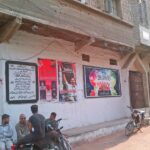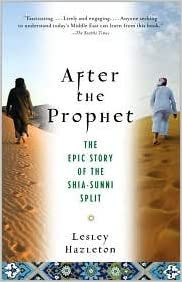Shia Genocide Events
Karachi, February 22, 1978 : Attack on Ali Basti
Date : February 22, 1978
Location : Karachi
Casualties :5
Gender : male ,
Narrative of the Event
Old Golimar (Purana Golimar) is a neighborhood in the Karachi West district of Karachi, Pakistan, where Ali Basti, a Shi’a neighborhood, is situated.
On February 22, 1978 A charged mob led by Deobandi’s militant organization Tanzeem-i-Ahl-e-Sunnat [1] (TAS) first hurled the stones at a Chup-Taazia procession, killing RAbiul Al-awal (14 Azadar) and Shi’a mourners in that incident. On the same day, a violent mob led by TAS invaded Ali Basti, and they started to burn the houses and shops owned by Shi’a Muslims. Five Shia Muslim males (Javed, Ishrat Hussain, Shenshah, and Anwer) were killed by Tanzeem-i-Ahl-i-Sunnat’s terrorists during their invasion of Basti Ali.
Javed’s story:
In 1978, houses in Ali Basti were single-story and mostly illuminated by lanterns. Roshan and her son Javed occupied one of such abodes. The young man worked part-time at a carpet shop.
He came home to eat lunch from work on the fateful day, little knowing he was about to have the last meal of his life. “I made fresh chappatis and cooked some vegetables,” said Roshan, fighting tears in vain. “Hearing the sounds of riots, I pleaded with him to flee, but he did not listen.”
Rioters entered the area, and soon a bullet pierced through Javed’s head. “I was devastated. I roamed the streets for three years, hoping to get my son back. Since I know the pain of a mother losing a child, I now attend funerals to console other mothers.”
Roshan did not relocate from the area. “It is people who come from other areas and create disturbances. Sunnis and Shias live in peace,” she said, referring to the intolerant outlets that frequently fuel conflict between Shias and Sunnis in the area.
Ishrat’s story:
In February 1978, Ishrat was ready to make a visit to Karbala. All his luggage was packed.
Ishrat’s small, grey-stoned house had to be built from scratch after it was burned down on February 22, 1978. His daughter, the elderly Sualiha, who still occupies it, says that the rioters who set her house on fire took away her jewelry and killed her father, Ishrat.
“We escaped with difficulty. My family and I lived in a camp at Ancholi Imambargah for 15 days before coming back.
Her father, who was an employee at the post office, was pushing men into the Hussaini Imambargah as riots broke out. It was then that he was shot.
“He died when he was helping others to be safe from the violence. His luggage for Karbala was also taken away by the attackers.”
Shahenshah’s story:
Death can cast a shadow of gloom over otherwise happy lives for decades. Shahenshah was shot dead during the 1978 incident. The young man had applied for a job at Jinnah Hospital, and his appointment letter came a day later, after his death. “Our family broke down after his death. My father went mad, and my brother’s death made things worse for my mother, who was a TB patient. They both died soon,” said Shahensha’s brother.
Anwar’s story:
Haider, whose 12-year-old brother Anwar was also a victim, was among those who were taking casualties to the hospital. “It was a dreadful day,said Haider.[2]
References
- Many students of Deobandi clerics Molana Abdul Shakoor Farooqi and Molana Hussain Ahmad Madani migrated to Pakistan and either set up seminaries here or became part of the Tanzim-e-Ahle-Sunnat (TAS) or Jamiat Ulema-i-Islam (JUI). They travelled through the length and breadth of the country, called for attacks on Azadari, and wrote books and tracts against it. Among them were: Molana Noorul Hasan Bukhari, Molana Dost Muhammad Qureshi, Molana Abdus Sattar Taunsavi, Molana Mufti Mahmood, Molana Abdul Haq Haqqani, Molana Sarfaraz Khan Safdar Gakharvi, and Molana Manzoor Ahmad Naumani. The sectarian clashes of Lucknow had attracted zealous workers of religious parties from Punjab and KPK, but with the influx of sectarian clergy, the religious sectarianism and narrow-mindedness of UP were injected into Sufism-oriented Punjab and Sindh. In the 1950s, Tanzim-e-Ahle-Sunnat started to arrange public gatherings all over Pakistan to incite violence and mock Shia sanctities. TAS issued an anti-Shia monthly called Da’wat. See: Grounding Sectarianism: The end of syncretic traditions by Sadia Sumbal , published in Journal of the Research Society of Pakistan, Volume No. 55, Issue No. 2 (July–December, 2018)
- Source:
- The Shias of Pakistan: An Assertive and Beleaguered Minority, Book by Andreas Rieck, Hurst Publisher, 2015, Chapter 6: The Zia ulhaq Era, 1977–1988,
- https://tribune.com.pk/story/505605/shia-sunni-conflict-one-mans-faith-is-another-mans-funeral







